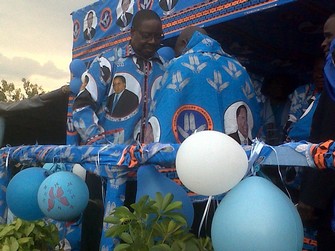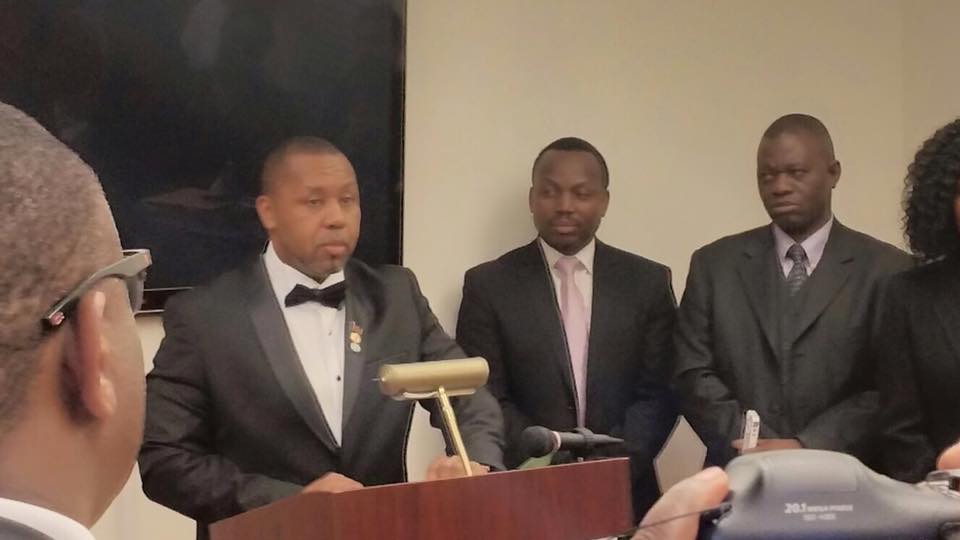A review of Older Adults’ Experiences of Aging, Sex, and HIV Infection in Rural Malawi,by Emily Freeman.
Emily Freeman’s dissertation provides an innovative and sensitive exploration of a relatively understudied aspect of aging. Engaging literature from anthropology, demography, gerontology, and public health, Freeman attends to the lived experiences of older adults and explores how HIV both shapes and provides a lens onto broadly shared experiences of aging in Malawi. Specifically, the dissertation asks: “How do older adults living in rural Malawi experience getting older?” and “How do older adults with HIV living in rural Malawi experience their infection?” (p. 24). In answering these questions, Freeman develops important conceptual and ethnographic themes of bodily vitality, work, and social personhood. In so doing, Freeman makes important contributions to literature on aging, the social construction of the body, and personhood in Africa.
The Introduction lays out broadly the parameters of her investigation, arguing for an expanded understanding of growing old in Africa, for greater attention to the place of sex in the life course, and an attention to bodily experience in the construction of social identity. In particular, Freeman argues for a more complex understanding of old age in Africa, one that goes beyond a focus on the erosion of “traditional society” and that emphasizes qualitative attention to the experience of aging rather than macro-level accounts of demographic transition.
Freeman argues for greater reflexivity in gerontological and demographic research methods, and Chapter 2 expands on her methodological contributions and concerns, situating her use of ethnographic and grounded theory methodologies within demographic disciplinary frameworks. She describes 11 months of fieldwork conducted over three research trips, designed to capture demographic change as it unfolds. She initially worked together with the Malawi Longitudinal Study of Families and Health (MLSFH). This experience informs her decision to focus on Balaka District, where HIV prevalence is relatively high and where she had a particularly good rapport with her research assistants. During the six months that constituted her main period of fieldwork, Freeman and her assistants carried out 130 repeated in-depth interviews with 43 older men and women in Balaka district. As Freeman writes: “The aim of the interviews was to elicit as much narrative as possible about respondents’ perceptions, attitudes and beliefs about aging and HIV infection,” which she interprets with particular attention to how respondents construct meaningful social identities (p. 56).
Chapter 3, which explores old age as a challenge to notions personhood “based on body-centered understandings of old age and the life course” (p. 113), is particularly compelling. Here, Freeman explicates common themes across the diverse experiences of aging among her respondents. Key to these were concerns with the body and bodily fluids, understood to be imbued with life force and strength that deteriorates as one aged. Becoming elderly is thus partly a process of losing blood and strength over the course of one’s life. This process, though inevitable, also causes susceptibility to disease and death and imposes new limits on one’s biological, social, and physical productivity. In turn, one recognizes oneself (or is recognized by others) as growing older through limitations on work and self-sufficiency and new relations of dependence on others. Seen positively, these relations are reciprocal. Elderly parents, for instance, rely on adult children, whose care reciprocates for the loss of vitality that raising children entails. Care provided outside the family, by contrast, entails unequal relations of dependence that threaten not only physical wellbeing but also social personhood. Negotiating bodily care is thus a fraught and deeply meaningful endeavor.
In part because of the centrality of productivity to personhood, Freeman shows that many older people desired to continue to work. This was both materially motivated, since a context of food insecurity meant that few were completely supported by family members, and socially emphasized, since work is an important sign of adult personhood. Crucially, Freeman shows that not all Balaka residents were considered to be robust social persons. Through her respondents’ narratives, she illustrates how some members of the community (for instance, primarily the very young, very old, or very sick) were excluded from full personhood (pp. 134-140). It was these exclusions and inclusions that respondents sought to navigate as they narrated their life experiences in terms of work, care, and bodily capacity. I found these discussions of conceptions of vitality and the importance of work particularly insightful and important, since they rooted narratives of aging and health that appear in subsequent chapters in specific notions of bodily and social wellbeing and rendered a complex social world as it changes over the life course.
Subsequent chapters expand on these concepts of aging. Chapter 4, “The body grows old but not the heart,” shows that “while respondents conceptualized the aging process of decline as linear and one-way, an individual’s journey did not follow this [linear] trajectory” (p. 147). Drawing on narratives that challenge linear notions of aging, Freeman suggests that respondents work hard to avoid the childlike “possible self” that serves as a counterpoint to understandings of adulthood based on physical productivity and work. Through these contrasting narratives, recounted with evocative ethnographic and narrative detail, respondents show how they actively negotiate their sense of self throughout the aging process. Chapter 5, “Sex that gives and takes in older age,” situates understandings and experiences of sex within wider meanings both of sex and sexuality in Malawi and of aging and physical change. In keeping with understandings of physical vitality as contained in bodily fluids, the exchange of fluids during sex is understood as physically and emotionally nourishing, providing men and women with “vitamins,” “medicine,” and vital energy. Sexual desire, like bodily strength, diminished or cooled over time, and older adults sought to manage changing desire in ways that preserved both physical health and social relationships. A desire for sex is an important aspect of adult identity, even as judiciously managing desire – for instance, by avoiding behavior considered promiscuous – is a sign of adult wisdom. Like work, sex is a domain in which respondents seek to manage their identities and their sense of self as social and moral actors, and through which they interpret and make sense of their own physical, social, and emotional transformations over the life course.
In Chapter 6, Freeman turns her attention from experiences of aging broadly conceived to experiences of HIV infection. She specifically traces how two understandings of HIV – that it is sexually transmitted via socially unsanctioned sex, and that it inevitably weakens and so requires intensive care – are situated within an experience of aging narrated in terms of work, bodily fluids and vitality, sexuality, and productivity. Particularly effective here are her close readings of the narratives offered by older adults of their experiences learning and reacting to their HIV status and their negotiation of the challenges that HIV poses to physical and social wellbeing – for instance, by implying unwise sexual behavior, prompting a need for humiliating intimate care, or limiting capacity for work. A strength of this analysis, however, is that Freeman attends to HIV infection as both a specific challenge and as an experience deeply situated within broader issues of aging and wellbeing. Thus, concerns that HIV infection will hinder the capacity for work reflect the reality that older adults who are known to have HIV may be overlooked for employment programs or find that their labor is less in demand due to social perceptions that associate HIV infection in older people with “non-work.” These perceptions circulated regardless of whether the individuals themselves felt themselves willing and able to work. The (limited) availability of anti-retroviral therapy (ART) did little to change this perception that HIV infected older adults were frail and vulnerable, even when people appeared to have physically recuperated. Yet the fear of being a financial or physical burden on family members also crosscut many narratives regarding aging and ill health, even among those who do not have HIV. The challenges facing HIV-positive older adults, then, are particular and sometimes acute but not always exceptional. Similarly, just as some older adults find ways of positively narrating and navigating their experiences of aging, so do some older adults with HIV find means of narrating and affirming their continued moral, social, and physical productivity and, therefore, their continued membership in a salient social world.
The final ethnographic chapter contextualizes these narratives and experiences within a policy environment just beginning to attend to the problems and experiences of older adults with HIV. Freeman insightfully shows how older adults become recognized as a distinct “vulnerable group” in the policy context, national and transnational, that shapes AIDS policy in Malawi, even as she demonstrates how tenuous and “patchy” this policy context was – a tenuousness which reflects global priorities as much as local realities. Her account is particularly compelling when she traces debates over the feasibility and desirability of a social cash transfer scheme, situated within a broader context of little funding for NGO or government programs aimed at supporting the elderly. She shows that attention to HIV in older age was “inconsistent, and at times contradictory” and was shaped by what she terms “lament discourses on African aging,” which situate older people as “wise elders” facing dire predicaments in a context of modernization, rural-urban migration, and loss of traditional structures (p. 284). These approaches, Freeman concludes, reflect international and interventionist discourses on aging in Africa more than they reflect the reality of older adults in Malawi.
In conclusion, Freeman shows that discourses on aging and HIV center on the social construction of the body. She writes: “Within the specific context of rural Malawian livelihood systems based on self-sufficiency and familial support networks, able bodies (that is, those with sufficient ‘blood’) were necessary for social and personal recognition of an individual as an adult” (p. 295) As bodies aged, or became ill or potentially ill, restrictions on physical productivity and increasing social and physical dependency threatened the personhood of older adults. In the face of this, respondents offered narrative strategies for presenting the self as productive in a variety of ways, working – not always successfully – to incorporate old age and HIV into socially salient identities. HIV infection does not, she concludes, abruptly disrupt or “spoil” identities, as some theorizations have suggested, but nor does it leave identities unchanged. It is in this grey area, in which HIV challenges but does not radically transform, the social identities of older adults that the rich and complex portraits painted by her respondents are most resonant.
Addressing the intertwined themes of aging and HIV infection in a variety of domains – from intimate social life to the governmental policy – Emily Freeman paints a nuanced and sensitive portrait of the experiences of older adults in Balaka District. Most compelling are her engagements with the vivid and visceral accounts of navigating not only challenging life circumstances but also changing possibilities for personhood, relation, and belonging. In this way, Emily Freeman also demonstrates how attention to aging can be a rich entry point into broader, even existential, questions about the narration of lived experience over the life course.
Ramah McKay
Assistant Professor
Department of Anthropology
University of Minnesota
rkmckay@umn.edu
Sources
Eleven months of fieldwork with older adults in Balaka District, Malawi, including: in-depth repeated interviews with 130 respondents (older adults in Balaka District) and with actors in government and non-governmental policy settings; participant observation in Balaka and Lilongwe; research participation with the Malawi Longitudinal Study of Families and Health.
http://dissertationreviews.org/archives/7638





No comments! Be the first commenter?